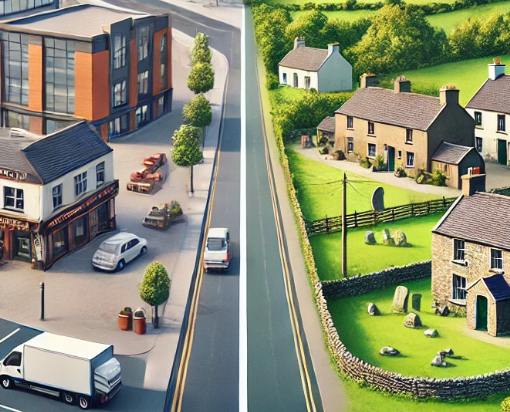Evaluating Rural vs. Urban Locations for Business Expansion

Expanding a business is a significant step that requires careful evaluation of the market, competition, and local conditions. One of the most fundamental decisions is whether to grow in an urban area or target a rural market. While cities offer dense customer bases and established infrastructure, rural locations can provide cost advantages and niche market opportunities. Understanding the differences between these environments is key to making an informed decision.
1. Market Size and Demographics
Urban areas typically have higher population densities and a greater diversity of consumer segments, making them attractive for businesses that rely on high foot traffic or varied customer profiles. Census data can reveal important insights such as age distribution, household composition, and employment levels—key factors that influence demand for different products and services.
In contrast, rural areas often have smaller but more loyal and community-driven customer bases. Businesses expanding into these locations need to assess whether the available population is sufficient to support long-term sustainability.
2. Competition and Business Density
One of the biggest advantages of operating in an urban area is the presence of a well-developed commercial ecosystem, but this also means higher competition. A category-based analysis of nearby businesses and amenities can help determine if a market is saturated or if there’s an underserved niche that presents an opportunity.
Rural locations tend to have fewer direct competitors, but this doesn't always translate to success. If a business relies on customer volume, the lower population density might pose a challenge. Evaluating the proximity of key services and complementary businesses can indicate whether the area has the right commercial environment to support growth.
3. Property Costs and Availability
Property costs can be a major factor when deciding between rural and urban locations. Commercial property data allows businesses to compare lease rates and sales trends across different locations. Urban centres tend to have higher rental costs due to demand, whereas rural areas often provide more affordable property options, which can free up capital for other investments.
However, lower costs in rural areas must be weighed against potential downsides such as limited infrastructure, accessibility, and lower walk-in traffic.
4. Infrastructure and Accessibility
Urban environments offer stronger infrastructure, including transport links, public utilities, and digital connectivity—essential for businesses that require regular supply chain movement or online engagement.
Rural areas may have fewer transport links and slower broadband speeds, but recent improvements in infrastructure have made many smaller towns and villages viable options, particularly for remote-friendly businesses or industries with lower reliance on daily logistics.
5. Planning and Development Trends
Understanding planning application trends can provide valuable insight into the future direction of a location. Are new commercial developments planned in a rural area? Is an urban district seeing growth in residential planning, which could increase the customer base over time? Evaluating recent granted and refused applications can help businesses anticipate upcoming opportunities or challenges.
Making an Informed Choice
Choosing between rural and urban expansion depends on multiple factors, including target market, operational needs, and financial considerations. By using data-driven insights on demographics, competition, property trends, and infrastructure, businesses can make more confident decisions about where to expand.
Curious about how different locations compare? Explore real-world insights today → Smart Location Analysis.